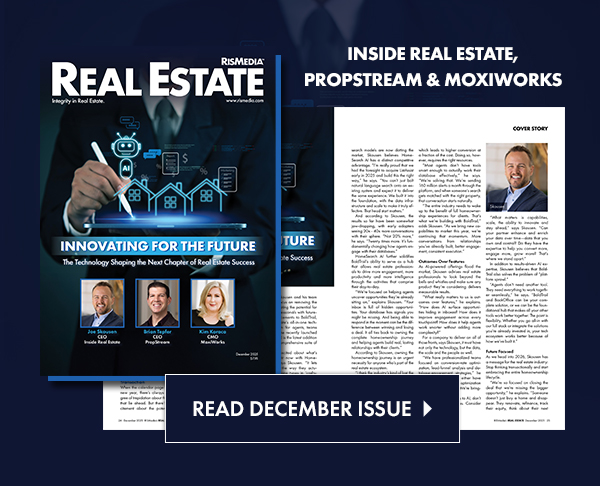 With their holiday plans locked in, most chief marketing officers are turning their focus to 2013. At the center of their attention is omnichannel retailing, a phenomenon that for many brands is as compelling as it is confounding.
With their holiday plans locked in, most chief marketing officers are turning their focus to 2013. At the center of their attention is omnichannel retailing, a phenomenon that for many brands is as compelling as it is confounding.
The concept of omnichannel is enticing to marketers because it reflects the reality of how consumers ultimately form their purchasing decisions today. The reality is this: Consumers are everywhere, continually tapping into a spiraling array of marketing channels and touch points. Some channels (e.g., TV commercials and point-of-sale systems) have been around for decades, while others such as mobile devices, exchange-traded online ad units and social media sites have only come into their own in the past few years. Many more channels will undoubtedly emerge in the future.
Omnichannel is equally compelling to CMOs as it is confounding because it promises the Holy Grail of marketing: the ability to seamlessly connect with consumers in real time across all available marketing channels with a consistent and relevant message. At its core, omnichannel is about customer data and a CMO’s ability to collect and connect it. The appeal of this is obvious. It’s also intimidating. The challenge for most brands is how to effectively capture, monitor and combine all this information in a holistic way that provides consumers with the unique shopping experiences that omnichannel promises.
CMOs can use the following four steps to guide their thinking as they map their omnichannel plan for 2013:
1. Think about your organization in the context of omnichannel. Nothing happens without proper organizational alignment. This step is absolutely critical for CMOs to capture the promise of omnichannel.
Marketing channels tend to emerge sequentially, and as they do, specific teams are assigned to manage them. For example, it’s not uncommon for companies to have a social media team, a mobile team, a web team and yet more teams managing things like POS systems and data warehousing.
Although a team approach enables specific groups to master their respective channels, it also tends to create silos within an organization. Specialist marketing services providers who emerge to sell solutions specific to each silo frequently exacerbate this “silo syndrome.” Consider the emergence of social media experts, a new mobile capability or a CRM system linked to email but not on-site activity.
Planning for 2013 will require thinking about your organization in the context of the “omniconsumer.” Are the goals of the team and organizational structure consistent with the customer? If not, what steps must be taken to change the organizational structure and team bonus objectives? Who is the owner of the omnichannel customer? If the answer is “everyone,” that’s a problem. It must be clear which person or team is responsible and accountable for the omniconsumer and, ultimately, the omnichannel champion.
2. Create data personas. Mastering omnichannel begins with a deep understanding of who the customer is and how that customer interacts with your brand. Focus groups or quantitative studies on decision-making can be helpful in determining the number and types of channels your customers typically use when making a purchase decision. This work will give you a road map for how to connect the data that underlies your customers’ experiences with your brand.
3. Perform a data audit. Recognize that consumers aren’t tied down to one particular channel or another; they’re everywhere. Understand that wherever consumers are, so too should be your brand’s data and decisions. In other words, you need to connect the data dots.
A data audit should be performed by the omnichannel owner using knowledge gained from the data persona work. The owner needs to map the consumer touchpoints for the brand and determine where data from the various channels resides today. Identifying where the data doesn’t exist is just as important as identifying the silos that are already connected. Finally, look at the speed at which data is available in a channel. Many legacy data sources are “next day” or “next week.” Next-day data won’t meet the needs of the omnichannel consumer, who is shopping and making purchase decisions in real time, often using multiple devices simultaneously.
4. Get started. Gluing together the data that underlies the omnichannel consumer is a daunting task. The data needs to connect each channel seamlessly to all the others, and the data must be ready for action in real time, yet stored in such a way that it can be easily accessed and continually updated. For 2013, find partners you can trust and set reasonable goals to collecting and connecting data from multiple channels. To do so, consider the following options:
• Do it yourself. If your brand has the resources of Amazon.com or eBay, this is a solid approach, but lacking such assets, this approach may require your brand to take a leap of faith, throw lots of developers and capital at the problem, and hope for success a year or two from now.
• Find an end-to-end solution provider. Intimated by omnichannel? Turn the keys over to one of several third parties like Adobe, IBM or Google. In return, you’ll get their version of a comprehensive “marketing stack.” You’ll also get very little flexibility and control, and you’ll run the risk that your CEO will think you’re abdicating your job to a third party. And consider this: Who owns the data on your customers in this scenario?
• Create your own marketing stack. Work with a neutral party to create a customized marketing stack built around your existing assets and needs. This will give you more control than an end-to-end solution and at the same time allow you to have an omnichannel program that you couldn’t create on your own. Furthermore, in this scenario you alone own the customer and the data.
Mastering the omnichannel consumer is a marathon, not a sprint. The important thing for CMOs in 2013 is to get started … your competition is.
Mike Sands is president and CEO of BrightTag, a technology platform provider for the digital marketing industry.










